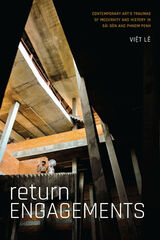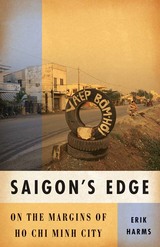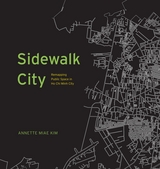3 books about Ho Chi Minh City

Return Engagements
Contemporary Art's Traumas of Modernity and History in Sài Gòn and Phnom Penh
Viet Lê
Duke University Press, 2021
In Return Engagements artist and critic Việt Lê examines contemporary art in Cambodia and Việt Nam to rethink the entwinement of militarization, trauma, diaspora, and modernity in Southeast Asian art. Highlighting artists tied to Phnom Penh and Sài Gòn and drawing on a range of visual art as well as documentary and experimental films, Lê points out that artists of Southeast Asian descent are often expected to address the twin traumas of armed conflict and modernization, and shows how desirable art on these themes is on international art markets. As the global art market fetishizes trauma and violence, artists strategically align their work with those tropes in ways that Lê suggests allow them to reinvent such aesthetics and discursive spaces. By returning to and refashioning these themes, artists such as Tiffany Chung, Rithy Panh, and Sopheap Pich challenge categorizations of “diasporic” and “local” by situating themselves as insiders and outsiders relative to Cambodia and Việt Nam. By doing so, they disrupt dominant understandings of place, time, and belonging in contemporary art.
[more]

Saigon’s Edge
On the Margins of Ho Chi Minh City
Erik Harms
University of Minnesota Press, 2010
Much of the world’s population inhabits the urban fringe, an area that is neither fully rural nor urban. Hóc Môn, a district that lies along a key transport corridor on the outskirts of Ho Chi Minh City, epitomizes one of those places. In Saigon’s Edge, Erik Harms explores life in Hóc Môn, putting forth a revealing perspective on how rapid urbanization impacts the people who live at the intersection of rural and urban worlds.
Unlike the idealized Vietnamese model of urban space, Hóc Môn is between worlds, neither outside nor inside but always uncomfortably both. With particular attention to everyday social realities, Harms demonstrates how living on the margin can be both alienating and empowering, as forces that exclude its denizens from power and privilege in the inner city are used to thwart the status quo on the rural edges.
More than a local case study of urban change, Harms’s work also opens a window on Vietnam’s larger turn toward market socialism and the celebration of urbanization—transformations instructively linked to trends around the globe.
[more]

Sidewalk City
Remapping Public Space in Ho Chi Minh City
Annette Miae Kim
University of Chicago Press, 2015
For most, the term “public space” conjures up images of large, open areas: community centers for meetings and social events; the ancient Greek agora for political debates; green parks for festivals and recreation. In many of the world’s major cities, however, public spaces like these are not a part of the everyday lives of the public. Rather, business and social lives have always been conducted along main roads and sidewalks. With increasing urban growth and density, primarily from migration and immigration, rights to the sidewalk are being hotly contested among pedestrians, street vendors, property owners, tourists, and governments around the world.
With Sidewalk City, Annette Miae Kim provides the first multidisciplinary case study of sidewalks in a distinctive geographical area. She focuses on Ho Chi Minh City, Vietnam, a rapidly growing and evolving city that throughout its history, her multicultural residents have built up alternative legitimacies and norms about how the sidewalk should be used. Based on fieldwork over 15 years, Kim developed methods of spatial ethnography to overcome habitual seeing, and recorded both the spatial patterns and the social relations of how the city’s vibrant sidewalk life is practiced.
In Sidewalk City, she transforms this data into an imaginative array of maps, progressing through a primer of critical cartography, to unveil new insights about the importance and potential of this quotidian public space. This richly illustrated and fascinating study of Ho Chi Minh City’s sidewalks shows us that it is possible to have an aesthetic sidewalk life that is inclusive of multiple publics’ aspirations and livelihoods, particularly those of migrant vendors.
With Sidewalk City, Annette Miae Kim provides the first multidisciplinary case study of sidewalks in a distinctive geographical area. She focuses on Ho Chi Minh City, Vietnam, a rapidly growing and evolving city that throughout its history, her multicultural residents have built up alternative legitimacies and norms about how the sidewalk should be used. Based on fieldwork over 15 years, Kim developed methods of spatial ethnography to overcome habitual seeing, and recorded both the spatial patterns and the social relations of how the city’s vibrant sidewalk life is practiced.
In Sidewalk City, she transforms this data into an imaginative array of maps, progressing through a primer of critical cartography, to unveil new insights about the importance and potential of this quotidian public space. This richly illustrated and fascinating study of Ho Chi Minh City’s sidewalks shows us that it is possible to have an aesthetic sidewalk life that is inclusive of multiple publics’ aspirations and livelihoods, particularly those of migrant vendors.
[more]
READERS
Browse our collection.
PUBLISHERS
See BiblioVault's publisher services.
STUDENT SERVICES
Files for college accessibility offices.
UChicago Accessibility Resources
home | accessibility | search | about | contact us
BiblioVault ® 2001 - 2024
The University of Chicago Press









